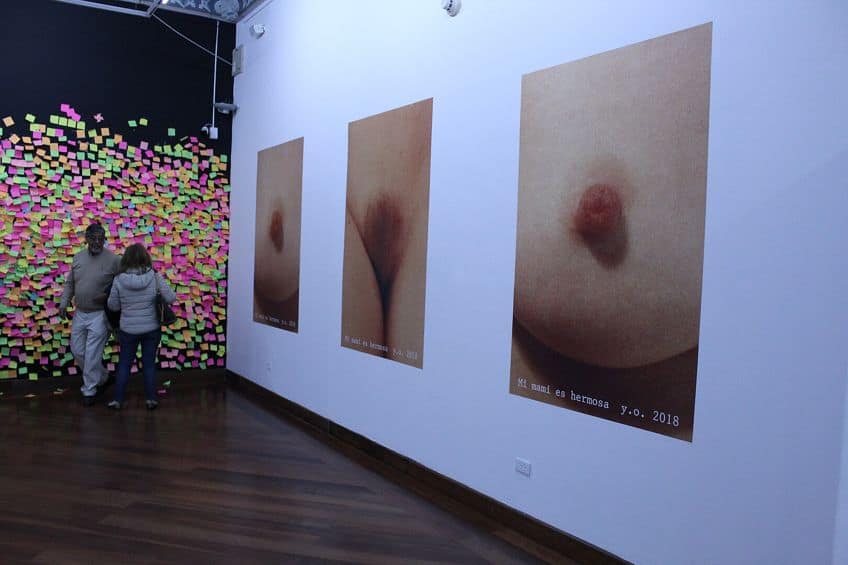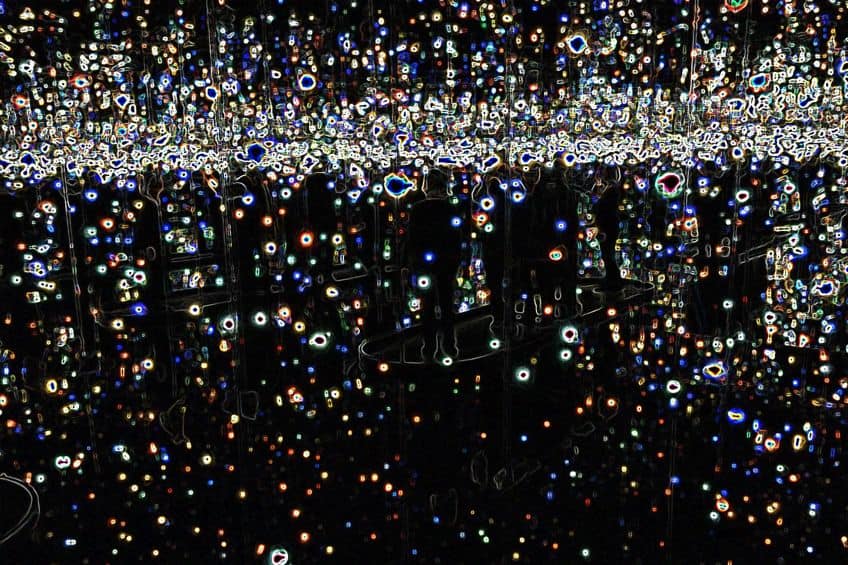Ephemeral Art – Capturing the Transition of Life in Art
Welcome to the captivating world of ephemeral art. This genre defies convention, embracing impermanence to create fleeting masterpieces that resonate with the human experience. From intricate sand mandalas to street murals washed away by rain, ephemeral art invites contemplation of life’s transience and interconnectedness. Join us as we explore the transformative power of impermanence and the hidden beauty within these transient masterpieces!
Table of Contents
Key Takeaways
- Ephemeral art is an artistic expression marked by its temporary and transitory nature.
- It includes diverse mediums like installations and land art, often using natural materials.
- Ephemeral art emphasizes the impermanence of both the artwork and life itself.
What Is Ephemeral Art?
Ephemeral art refers to creative works that exist temporarily, cementing their presence for only a brief period before fading away. This art form emphasizes transience, challenging the traditional notion of art as a permanent object. It often engages with themes of nature, mortality, and the passage of time.
Ephemeral art is characterized by its transitory nature, inherent non-archival quality, frequent site-specificity, and the use of materials prone to decay. These characteristics define a genre that embraces impermanence, inviting viewers to contemplate the fleeting beauty of creation and the inevitable passage of time.

Through its ephemeral nature, this art form challenges traditional notions of permanence in the artistic realm, offering a profound reflection on the transient essence of existence itself. Artists who create ephemeral pieces typically use materials with limited durability (such as ice, sand, or leaves), or they may conduct performances that leave no tangible remnants. Some examples include ice sculptures, sandcastles, street art (chalk; graffiti), temporary installations, and performance art.
Ephemeral art gained prominence primarily during the 1960s and was associated with groups such as Fluxus, which included influential figures like Joseph Beuys. The movement emphasized process over the final product, positing a shift in focus from materiality to conceptuality.
Today, this form of art continues to intrigue, often instigating a sense of urgency and presence among observers, as the experiences it provides are fleeting and unique to the time and place of their existence. It remains a topic of interest within contemporary art discourse.
Types of Ephemeral Art
Ephemeral art embraces a plethora of styles that are transient by nature, often created with the intention to exist briefly in a moment or specific place. Distinct media and practices like performance, land materials, and even urban spaces constitute the canvas for these fleeting expressions.

Conceptual Art
Conceptual Art places a higher emphasis on the idea or concept over the physical artifact. This type can manifest in any form, often challenging traditional notions of what art can be, and is frequently recorded in media other than the original e.g., through photography or written descriptions.
Land Art
Land Art involves the use of natural landscapes to create site-specific structures, sculptures, or patterns. Artists use materials such as stones, twigs, water, and soil, emphasizing the temporary nature of the work especially as it succumbs to natural elements.
The ephemerality of Land Art connects the audience to the natural life cycle of creation and decay.
Installation Art
Installation Art presents three-dimensional works designed to transform the perception of a space. Utilizing various components including photography, found objects, and lights, these installations are often site-specific and temporary, with the intention of creating an immersive experience for viewers.
Performance Art
Performance Art is characterized by live presentations where the human body becomes the primary medium. This art form often intersects with dance and body art, drawing audiences into an evocative experience that cannot be replicated identically—existing solely in the time and space of the performance.

Street Art and Graffiti
Street Art and Graffiti represent urban art forms that range from illicit graffiti to commissioned murals. The streets and built environments are the canvas for these works, inherently temporary due to their exposure to the public and elements, or alteration by other artists and authorities. This type often reflects social and political commentary.
Key Figures in Ephemeral Art
Ephemeral art has been shaped by key figures such as Andy Goldsworthy, celebrated for his natural installations that harmonize with the environment, and Yayoi Kusama, renowned for her immersive and vibrant temporary installations. These artists exemplify the genre’s exploration of impermanence and its capacity to inspire audiences to appreciate the beauty found in transient moments, transcending conventional artistic boundaries. Below, we examine some notable figures in ephemeral art!

Joseph Beuys (1921 – 1986)
| Date of Birth | May 12, 1921 |
| Date of Death | January 23, 1986 |
| Place of Birth | Krefeld, Germany |
| Notable Artworks |
|
Joseph Beuys remains an iconic figure in the realms of contemporary art, celebrated for his profound impact on conceptual and performance art. Born in Krefeld, Germany, Beuys challenged traditional artistic boundaries through his provocative works, often incorporating unconventional materials like felt, fat, and honey. Renowned for pieces such as How to Explain Pictures to a Dead Hare and I Like America and America Likes Me, Beuys’ art served as a powerful conduit for social and political commentary.
He invites audiences to question societal norms and engage with complex ideas of identity, ecology, and humanism.

Yayoi Kusama (1929 – Present)
| Date of Birth | March 22, 1929 |
| Date of Death | Present |
| Place of Birth | Matsumoto City, Nagano, Japan |
| Notable Artworks |
|
Yayoi Kusama, a visionary artist born in Matsumoto City, Nagano, Japan in 1929, has captivated global audiences with her mesmerizing and immersive installations. Renowned for her polka dot motifs and infinity mirror rooms, Kusama’s work transcends traditional boundaries, inviting viewers into vibrant and surreal worlds of endless repetition and boundless imagination. With notable pieces like Infinity Mirror Rooms and Pumpkin, Kusama’s art explores themes of infinity, obsession, and the interconnectedness of the universe.
She left an indelible mark on contemporary art and inspiring generations to embrace the power of creativity and self-expression.

Yoko Ono (1933 – Present)
| Date of Birth | February 18, 1933 |
| Date of Death | Present |
| Place of Birth | Tokyo, Japan |
| Notable Artworks |
|
Yoko Ono has left an indelible mark on the art world with her avant-garde works and commitment to social change. Known for her conceptual art, performance pieces, and collaborations with John Lennon, Ono’s art often challenges conventional notions of identity, politics, and human relationships. Notable pieces like Cut Piece and Imagine Peace reflect her dedication to advocating for peace and understanding across cultures, making her a pivotal figure in both contemporary art and activism.
Through her art and advocacy, Ono continues to inspire audiences worldwide to envision a more harmonious and compassionate world.

Marina Abramović (1946 – Present)
| Date of Birth | November 30, 1946 |
| Date of Death | Present |
| Place of Birth | Belgrade, Yugoslavia (now Serbia) |
| Notable Artworks |
|
Marina Abramović has profoundly influenced the landscape of contemporary art with her daring and boundary-pushing works. Renowned for her endurance performances that push the limits of physical and mental resilience, Abramović explores themes of vulnerability, presence, and human connection. Pieces like The Artist Is Present and Rhythm 0 challenge viewers to confront their own emotions and perceptions, fostering moments of profound introspection and communion.
Through her uncompromising artistry, Abramović continues to redefine the possibilities of performance art and its capacity to provoke thought and evoke profound emotional responses.

Andy Goldsworthy (1956 – Present)
| Date of Birth | July 25, 1956 |
| Date of Death | Present |
| Place of Birth | Cheshire, England |
| Notable Artworks |
|
Andy Goldsworthy, a celebrated environmental artist born in Cheshire, England in 1956, has mesmerized audiences with his ephemeral and nature-inspired creations. Known for his intricate sculptures, land art, and installations crafted from found materials such as leaves, stones, and ice, Goldsworthy’s work reflects a deep reverence for the natural world and the passage of time. Through pieces like Rain Shadows and Stone River, Goldsworthy invites viewers to contemplate the fleeting beauty of existence and the delicate balance between humanity and the environment.
His art serves as a poignant reminder of our interconnectedness with the Earth, inspiring reverence and awe for the wonders of the natural world.

Banksy (Present)
| Date of Birth | Unknown |
| Date of Death | Present |
| Place of Birth | Bristol, England |
| Notable Artworks |
|
Banksy, the enigmatic street artist whose identity remains shrouded in mystery, has left an indelible mark on contemporary art with his subversive and thought-provoking works. Born in the United Kingdom, Banksy’s graffiti and stencil art challenge societal norms, political structures, and consumer culture with biting wit and social commentary. Notable pieces like Girl with a Balloon and Love is in the Bin have garnered international acclaim, solidifying Banksy’s reputation as one of the most influential and controversial artists of our time.
Through his anonymity and bold artistic statements, Banksy continues to provoke dialogue and inspire change in the world of art and beyond.

Cultural and Environmental Context
Ephemeral art interacts profoundly with its setting, often created with the intention of responding to or emphasizing cultural and environmental themes. It reflects the transient relationship between the art and its surroundings, whether these are natural landscapes or urban public spaces.

Art and Nature
Artists often use natural materials that succumb to environmental conditions, reinforcing the idea that both art and nature are fleeting. These materials could include ice, leaves, or even the landscape itself. By incorporating the natural environment into their work, artists underscore the concepts of growth, decay, and the cyclical cadence of life. They provoke a contemplation on the impermanence of human endeavors in contrast to the relentless rhythm of the natural world. In ephemeral art, materials like ice, snow, plants, and flowers symbolize temporality and the passage of time, reflecting the transient nature of existence.
As these elements inevitably decay or melt away, they evoke the beauty and fragility of life, inviting viewers to contemplate the fleeting moments that define our human experience.
Art in Public Spaces
In urban contexts, ephemeral art, such as street art or public art, is particularly significant. It redefines public spaces and allows for a direct connection with a wide audience outside of the traditional confines of museums or galleries. Ephemeral works in these urban settings can take the form of projections, installations, or performances, each uniquely influenced by the pulse of city life.

In urban settings, ephemeral art flourishes through interactive installations and dynamic projections. These temporary forms of expression engage the public, utilizing the cityscape as a canvas for light and imagery. In bustling cities, such art not only captivates passersby but also fosters community and connection, shaping the evolving urban landscape.
Preservation and Documentation
The preservation and documentation of ephemeral art are crucial for sustaining its memory beyond its fleeting existence. These processes not only serve as a bridge between the artwork and its audience but also ensure its legacy within institutions like museums and galleries. Ephemeral arts pose a unique challenge to the traditional notions of permanence and material culture associated with art conservation. These artworks are by nature transient, often designed to exist temporarily or to evolve over time. Museums of Modern Art and galleries are frequently confronted with the dilemma of preserving art that was created to be ephemeral.
Ensuring endurance without compromising the artwork’s integrity involves innovative approaches, such as:
- Creating detailed documentation of the art piece
- Collecting and preserving related materials that can evoke the essence of the artwork
- Consulting with the artist to understand the intent and ideal methods of preservation

Role of Documentation
Documentation serves a pivotal role throughout the life cycle of ephemeral artwork. It becomes instrumental in capturing the artwork’s existence, providing valuable insights for potential recreations in the future, and offering a narrative that preserves the essence of the piece even in the absence of its physical form. Through documentation, ephemeral art transcends its fleeting nature, ensuring its legacy endures beyond the moment of creation and allowing its impact to resonate through time. Institutions, curators, and artists collaborate to document these fleeting works through various mediums such as photography, video recordings, written descriptions, and artist interviews.
The documentary evidence becomes part of the memory of the artwork, preserved in archives like the Museum of Modern Art, ensuring access for future generations and scholars wishing to study these art forms.
Importance of Ephemeral Art
Ephemeral Art plays a significant role in the contemporary art world. It challenges the traditional understanding of art as a permanent, tangible object. Ephemeral Art emphasizes the concept of transience and the idea that the value of an art experience does not solely rely on its longevity, but rather on the intensity and immediacy of the interaction it engenders with viewers. The importance of ephemeral art can be outlined as follows:
- Encourages viewer engagement: Ephemeral art often invites the audience to be present and engaged at the moment, knowing that the artwork is transient and won’t last.
- Reflects on the nature of life: By its fleeting nature, it mirrors the concepts of life’s temporality and the inevitable passage of time, allowing for reflection on change and impermanence.
- Innovation in material usage: Artists like Andy Goldsworthy use natural elements to create their work, emphasizing the resourceful and innovative use of materials that are typically not associated with permanence.
- Expansion of artistic practices: It broadens the scope of artistic expression beyond traditional mediums, incorporating various forms such as performance and happenings that cannot be captured entirely in a physical form.
- Value beyond physicality: Ephemeral art accentuates that the value of art extends beyond physical preservation, suggesting that the memory and impact of the experience also hold significant worth.

In essence, ephemeral art challenges our perception of permanence, urging us to embrace the beauty of transience. Through its fleeting nature, it prompts reflection, invites engagement, and connects us to the present moment. As we witness the delicate interplay of creation and decay, ephemeral art reminds us of life’s impermanence and the profound beauty found in its fleeting moments. In its evanescent splendor, ephemeral art leaves an enduring impression, inspiring us to cherish each passing moment and find meaning in the impermanent and the transient.

Frequently Asked Questions
Who Are Some Recognized Artists Who Specialize in Ephemeral Art?
In the field of ephemeral art, artists such as Andy Goldsworthy and Olafur Eliasson have gained recognition. Goldsworthy creates site-specific installations using natural materials, which often last only for a short period before the elements reclaim them. Eliasson, on the other hand, is known for his large-scale installations which often incorporate ephemeral elements like light and water vapor.
What Is the Significance of Ephemeral Art in Contemporary Culture?
Ephemeral art holds a significant place in contemporary culture as it challenges the conventional notions of art as a permanent, collectible object. It often emphasizes the creative process and experience over the final product, thereby inviting viewers to consider the immediate and temporal aspects of art. This form of art can be a reflection on the transient nature of life and a commentary on the fluidity of our cultural and social experiences.
How Does Ephemeral Art Interact With Natural Environments?
Ephemeral art interacts with natural environments through its non-invasive and often organic use of materials and sites. Artists like Shona Wilson use materials found in nature to create art that exists in harmony with the environment, highlighting the impermanence and the cyclic nature of organic life. These works exist in a dialogue with their surroundings, changing over time due to environmental factors and illustrating the concept of transience inherent in both art and nature.
Isabella studied at the University of Cape Town in South Africa and graduated with a Bachelor of Arts majoring in English Literature & Language and Psychology. Throughout her undergraduate years, she took Art History as an additional subject and absolutely loved it. Building on from her art history knowledge that began in high school, art has always been a particular area of fascination for her. From learning about artworks previously unknown to her, or sharpening her existing understanding of specific works, the ability to continue learning within this interesting sphere excites her greatly.
Her focal points of interest in art history encompass profiling specific artists and art movements, as it is these areas where she is able to really dig deep into the rich narrative of the art world. Additionally, she particularly enjoys exploring the different artistic styles of the 20th century, as well as the important impact that female artists have had on the development of art history.
Learn more about Isabella Meyer and the Art in Context Team.
Cite this Article
Isabella, Meyer, “Ephemeral Art – Capturing the Transition of Life in Art.” Art in Context. February 20, 2024. URL: https://artincontext.org/ephemeral-art/










